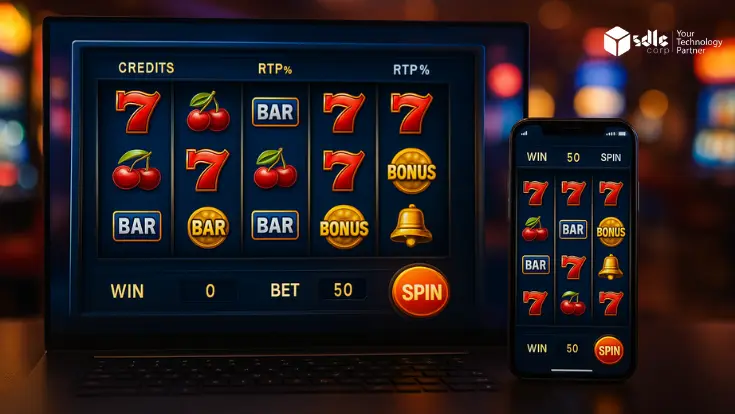Ludo, a traditional board game, has become a major player in mobile gaming. With millions of users worldwide, Ludo game developers need to understand the Ludo game financial model to ensure profitability. This blog explains the Ludo game business model, including in-app purchases in Ludo games and Ludo game advertising revenue, two critical revenue streams.
Key Monetization Models for Ludo Games
1. Freemium Model: The Foundation of Ludo Game Monetization

The freemium model is the backbone of Ludo game business models. It allows players to download and play the game for free while offering in-app purchases in Ludo games for additional features. These features might include premium dice skins, exclusive boards, or customizable avatars.
- Advantages:
- Free-to-play: No upfront costs for users.
- Encourages engagement with in-app purchases for added features.
- Generates consistent revenue from paying users.
- Free-to-play: No upfront costs for users.
For a more detailed overview of different business models in Ludo games, check out our post on the Ludo Game Business Model.
2. Ad-Supported Model: Maximizing Revenue Without Charging Players

Many Ludo games rely on Ludo game advertising revenue to generate consistent income. Advertising within the game helps monetize non-paying players. Ads can be shown during natural breaks in the game, such as between rounds or loading screens, keeping the experience seamless for players while generating revenue for developers.
- Types of Ads:
- Interstitial Ads: Full-screen ads between game sessions.
- Rewarded Video Ads: Players watch an ad in exchange for in-game rewards like tokens or dice rolls.
- Banner Ads: Small, static ads displayed at the top or bottom of the screen.
- Native Ads: These ads are designed to blend seamlessly into the game, such as in-game sponsorships or branded content.
- Interstitial Ads: Full-screen ads between game sessions.
To learn more about effective advertising strategies for Ludo games, take a look at our article on Ludo Game Advertising Revenue.
3. Subscription Model: Steady Revenue Stream

A subscription model can be particularly effective for players who are highly engaged. This model allows players to pay a recurring fee for additional content, such as ad-free gaming or special features like exclusive boards or avatars.
- Benefits:
- Provides predictable revenue for developers.
- Attracts dedicated players willing to pay for regular perks.
- Provides predictable revenue for developers.
For a deep dive into various revenue-generating opportunities for Ludo apps, refer to 10 Ways to Generate Revenue from Ludo Games.
4. One-Time Purchase Model: Simplified Monetization

Though less common, the one-time purchase model lets players pay once for the full game. It’s straightforward and avoids the need for in-app purchases or ads. Players get everything in the game for a single upfront cost.
- Example: Pay once for unlimited access to all game modes and boards.
In-App Purchases in Ludo Games

In-app purchases are essential for monetizing Ludo games. By offering players the chance to buy virtual goods or premium content, developers can create an additional revenue stream without affecting the overall game balance.
Common In-App Purchases in Ludo Games
- Customizable Avatars: Players can buy unique skins or outfits for their avatars.
- Power-ups: These can include extra moves or special abilities that make gameplay more exciting.
- Exclusive Game Boards: New boards with different themes, available for purchase.
- Virtual Currency: Players buy coins or tokens, which they can use to unlock premium content.
Why In-App Purchases Work Well for Ludo Games
- Freemium Appeal: The game remains accessible to everyone, but paying users get access to enhanced experiences.
- Non-Intrusive: Since purchases are optional, non-paying players can still enjoy the game without any disadvantage.
- Higher Engagement: Players who purchase items often become more loyal and engaged with the game.
To explore various ways to increase revenue from in-app purchases, visit our article on the Top Ludo Game Monetization Strategies for 2025.
Ludo Game Advertising Revenue

Advertising remains a core revenue stream for many Ludo game developers. It enables monetization from players who don’t make purchases, generating revenue through different ad formats.
Types of Ads in Ludo Games
- Interstitial Ads: Full-screen ads shown between game transitions.
- Rewarded Video Ads: Players have the option to watch an ad in exchange for rewards, such as extra moves or in-game currency.
- Banner Ads: Non-intrusive static ads that run at the top or bottom of the screen.
- Native Ads: Integrated, seamless ads that fit naturally into the gameplay.
Benefits of Ludo Game Advertising Revenue
- Continuous Cash Flow: Generates steady income from a wider audience.
- Encourages Engagement: Rewarded video ads drive players to watch ads for in-game rewards.
- Non-Intrusive: Ads are placed thoughtfully to minimize disruption, maintaining player satisfaction.
For more insights on leveraging ads for game revenue, see our blog on Affiliate Marketing Strategy for Ludo Game Apps.
Balancing Monetization and User Experience

Maintaining a balance between monetization and user experience is essential for the long-term success of Ludo games. Overusing ads or pushing purchases too aggressively can alienate players.
Key Strategies for Balance
- Offer Value: Ensure that in-app purchases improve the gaming experience rather than disrupt it.
- Limit Ad Frequency: Ads should be shown at natural breaks in the game to avoid frustrating players.
- Encourage Player Retention: Offering daily rewards, bonuses, and exclusive content keeps players coming back.
Conclusion
The Ludo game financial model is a dynamic mix of in-app purchases and advertising revenue, with the potential to provide a steady stream of income for developers. By balancing these revenue streams with a rewarding player experience, developers can ensure both profitability and long-term success.
As the Ludo game market continues to grow, understanding these strategies and finding the right Ludo game business model is key to success. With millions of players worldwide, Ludo remains a fantastic opportunity for monetization when done right.
Contact Us at SDLC Corp for more insights on Ludo game monetization, custom development, and how we can help you build profitable gaming solutions tailored to your needs.
FAQs
What Is The Ludo Game Financial Model?
The Ludo game financial model refers to the strategies and methods used by developers to generate revenue from their Ludo games. This includes monetization approaches such as in-app purchases, ads, subscription services, and one-time purchases. The model aims to strike a balance between providing a fun user experience and maximizing profitability.
How Do In-App Purchases Work In Ludo Games?
In-app purchases in Ludo games allow players to buy virtual goods, such as new avatars, dice skins, power-ups, or special boards, to enhance their gameplay experience. These purchases are optional, and players can continue enjoying the game without them. In-app purchases are a key revenue stream in the freemium model, where the game is free to download and play, but premium features are paid.
What Are The Benefits Of An Ad-Supported Model For Ludo Games?
An ad-supported model allows developers to generate revenue by displaying ads to players without requiring them to make purchases. Players can enjoy the game for free while developers earn money from various ad formats like interstitials, banner ads, and rewarded video ads. This model works well for games with a large user base, where ad views can generate significant revenue.
How Can A Subscription Model Help In Monetizing Ludo Games?
A subscription model provides a steady and recurring revenue stream by offering players premium features in exchange for a regular fee, such as monthly or annual subscriptions. These features might include exclusive content, ad-free gameplay, or special game modes. Subscriptions are beneficial for retaining loyal players who are willing to pay for enhanced experiences.
What Is The Role Of Rewarded Video Ads In Ludo Game Monetization?
Rewarded video ads allow players to watch an advertisement in exchange for in-game rewards, such as extra moves, tokens, or other benefits. This model enhances player engagement by offering rewards without disrupting the gameplay experience. Rewarded video ads can be highly effective in retaining players and boosting monetization, as players are incentivized to watch ads voluntarily.





